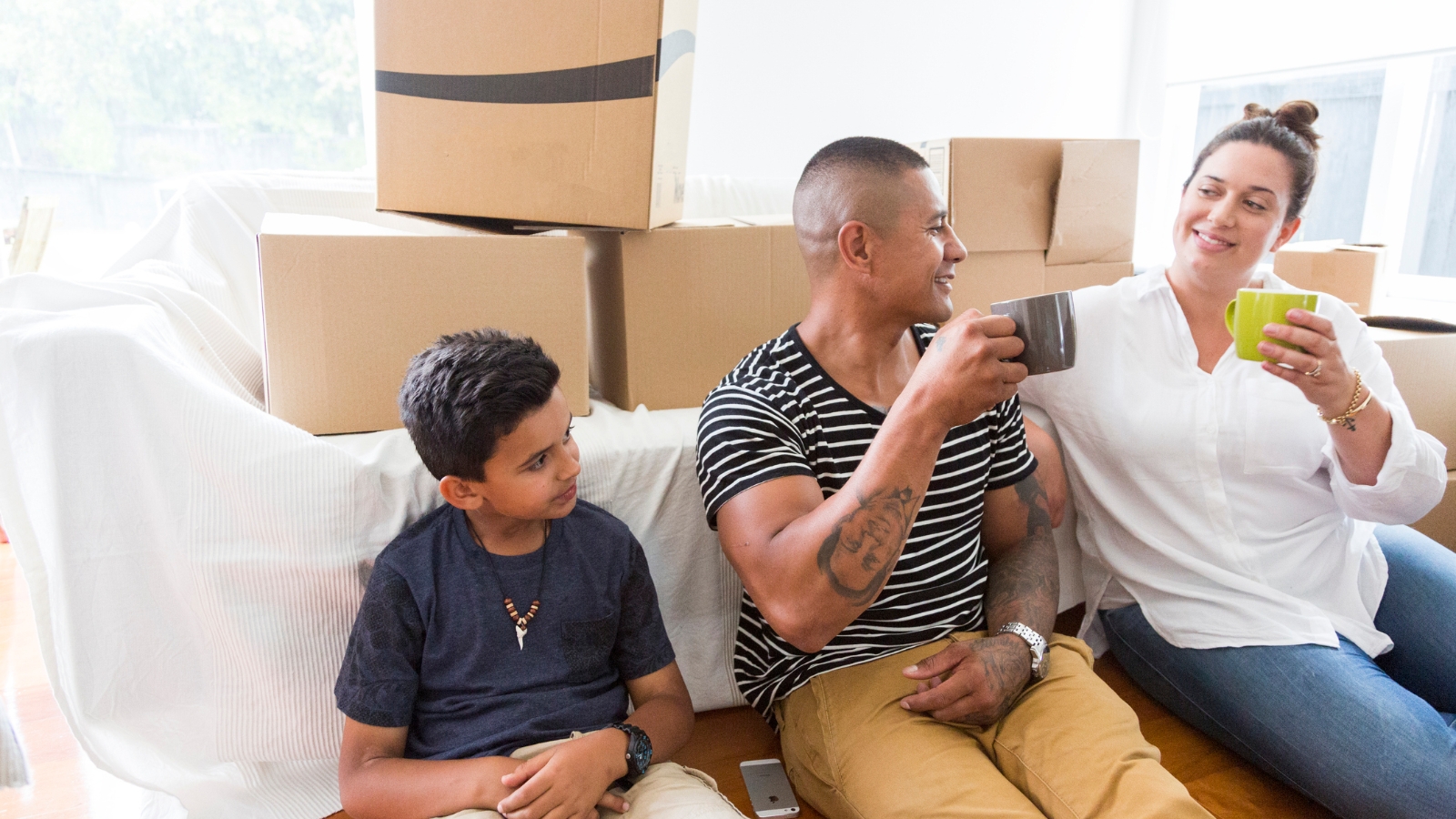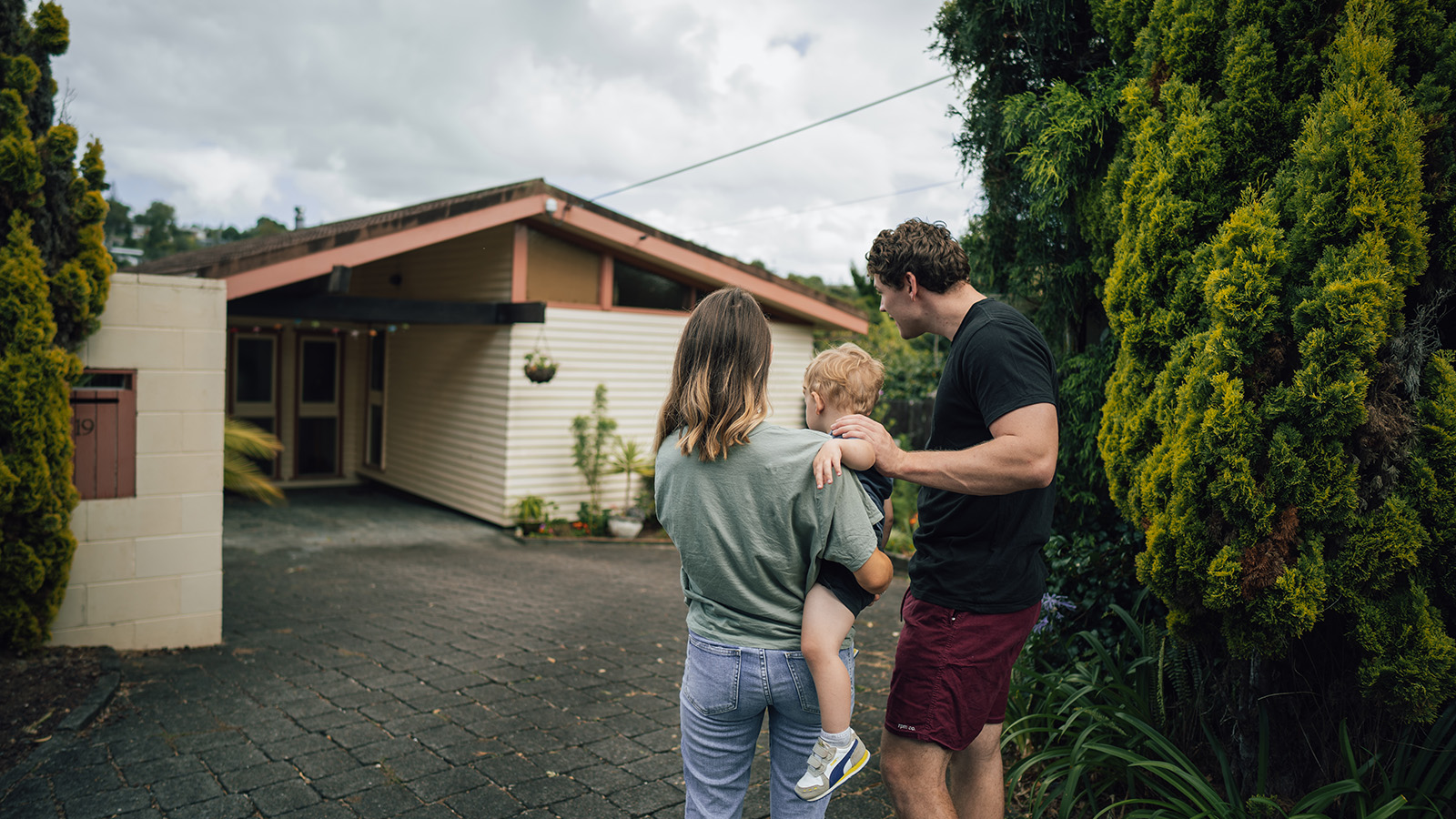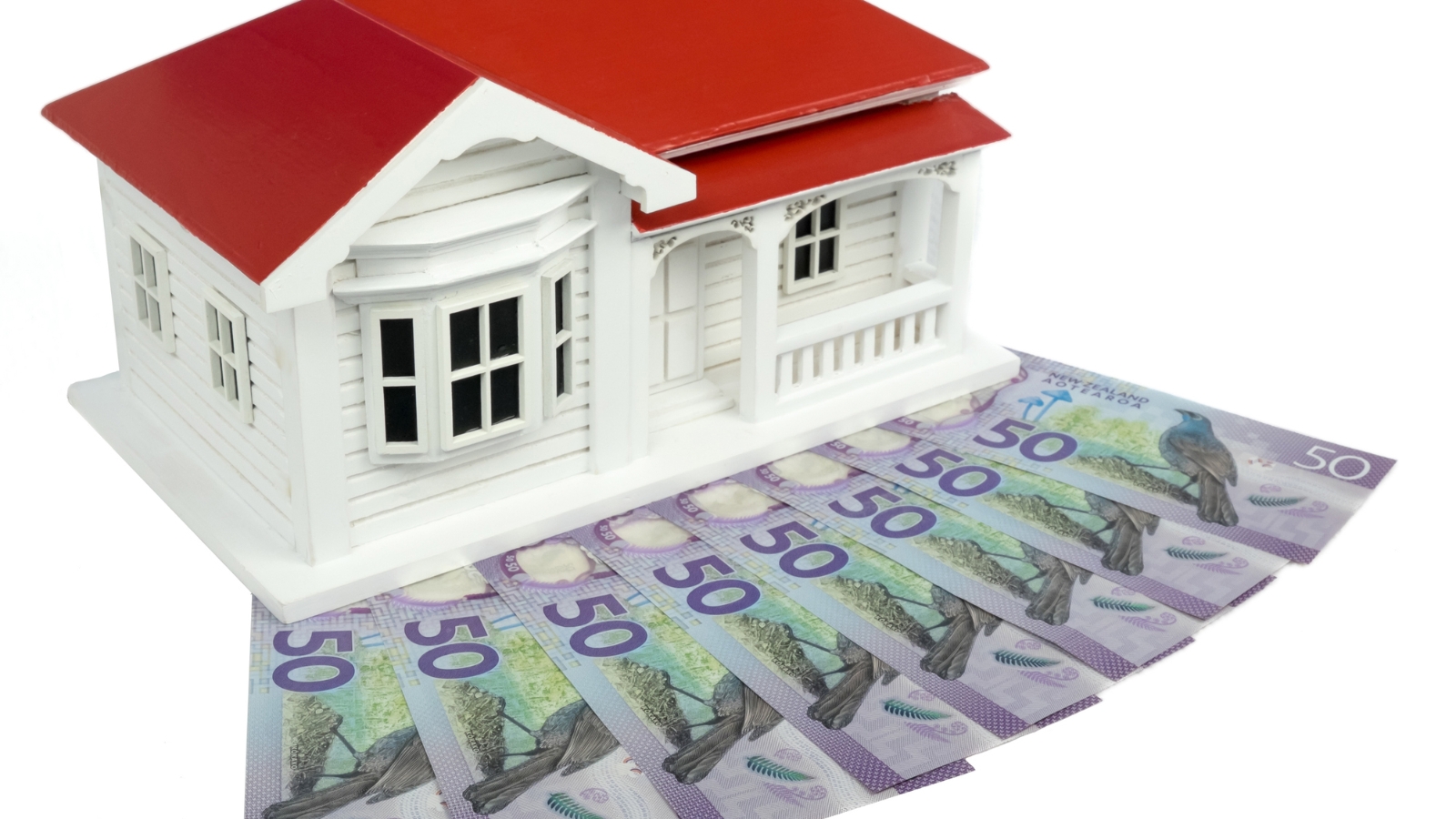Buying guide
How to get a mortgage in 12 steps
Securing a home loan can be a little tricky - read our guide to make it easier.

So you want to buy a property and you’re scouring Trade Me Property for the perfect home? Not so fast. The first step toward any property purchase should be arranging a home loan.
But how to get a mortgage in Aotearoa New Zealand? The process can be a little complicated and tricky, so to make it easier we’ve created a straightforward step by step guide.
Step by step guide to getting a mortgage
1. First figure out what you want
Buying a home is a big decision. So before you start down this road make sure it’s what you want and that you’re ready to service a mortgage and maintain a property. Then figure out what type of home you want. Think about location, number of rooms, type of property and the type of lifestyle you’d like to have. If you’re buying with a significant other, family or friend, make sure they’re on the same page too.
2. Next figure out what you can afford
It’s worth having a look at what’s available early on to figure out what you can realistically afford. To get started jump onto Trade Me Property and use the location, bedroom and property type filters to find properties that might suit your needs. Filter by price to get an idea of what they may cost.
You’ll need 10-20% of the property’s price as a deposit, plus enough income to service the loan repayments in order to get a mortgage from a lender. Banks have their own serviceability requirements, but as a general rule your mortgage repayment should never exceed 30% of your pre-tax income.
Use a mortgage calculator to work out what your deposit and mortgage repayments might be.
3. Shop around to find the best lender
Next, it’s time to find a lender. The largest cost of any home loan is interest so that should be your priority when searching.
Don’t go with your bank by default, instead shop around for the best deal by either comparing lenders online or finding a mortgage broker to do the shopping around for you. A good mortgage broker will give you access to a number of lenders, advocate on your behalf with them and help you with your application. It’s worth considering major banks, smaller banks and non-bank lenders.
It's a great idea to speak to a motgage broker for help securing a home loan.
4. Ask your lender the right questions
Don’t be afraid to speak to a few lenders to make sure you know what you’re signing up for when you get a mortgage. You could ask:
What fees are charged?
Can I make extra repayments without incurring fees?
If I buy a new home in a few years can I move my mortgage to that property?
If I repay my mortgage early what fees will I be charged?
What would be the total cost of my home loan?
As well as asking questions it may be worth negotiating with lenders. Ask them if they can offer a better interest rate or waive certain fees and you might be surprised how willing they are.
5. Get your finances in order
Once you’ve chosen a lender they’ll be able to take a look at your finances and tell you whether you’re ready to buy a home and get a mortgage. If you are, great news! If not you may need to save more of a deposit or work on your budget.
Lenders love to see genuine savings - that means money you’ve earnt that’s been put aside regularly to save for a deposit. They will look on these savings more favourably than gifts from parents or windfall gains when assessing your application.
They’ll also assess your credit score, so it’s worth checking this before you apply. To improve it and make your application better it’s a good idea to pay off all your debt and create a detailed budget before applying. Remember your lender will want to look at three to six months of bank statements when assessing your application, so it’s a great idea to make sure your finances are looking amazing during that period - the more you save and the less you spend the better.
6. Put together your deposit
Generally you’ll need 20% of the purchase price of the property as a deposit but there are exceptions. New build properties can often be purchased with a 10% deposit and first home buyers may be able to buy with as little as a 5% deposit if they are eligible for government assistance but keep in mind that these low deposit loans may come with higher fees.
You may also be able to withdraw from your KiwiSaver to help fund your deposit if you’ve been contributing for three years and are a first home buyer.
Getting a home loan is often the hardest part of buying a home.
7. Apply for government assistance or get help from family
Eligible buyers may be able to access government assistance to make it easier to save a deposit or get a home loan, such as the First Home Loan. This is a bank loan underwritten by Kāinga Ora that reduces the 10-20% deposit requirement to just 5%. As well as government assistance you may be able to get help from family if they’re willing (and able) to use their home as security and act as either a co-borrower or guarantor. This will enable you to buy with a much smaller deposit and avoid low equity loan fees.
8. Find a good property lawyer
Before you sign a loan contract it’s a great idea to have a lawyer look over it to ensure you understand it, especially if it’s your first! You’ll also need a good property lawyer to check the property you purchase, look over the sale and purchase agreement and handle signing of key documents like the home loan documents.
9. Apply for conditional approval with your lender
Once you’ve figured out your finances, saved your deposit, found a lawyer and gotten your ducks in a row, it’s time to apply for conditional approval with your lender. This isn’t formal approval, it’s just an indication from your lender that if nothing changes and they approve of the property you buy, they’ll lend you a certain amount.
Generally you’ll need to provide the following during the application:
Proof of income which may include payslips or financial statements prepared by an accountant if you work for yourself.
Proof of debt and outgoings which may include bank statements and statements on any credit cards, hire purchase agreements or personal loans.
Evidence of your deposit and KiwiSaver balance which is usually a bank statement and a written statement form your KiwiSaver provider.
Two forms of valid ID.
Proof of address.
A mortgage broker can be a great help during this period as they can capture your financial details and help you make the applications. If you’re denied by one lender they can quickly repeat the process with another.
First comes the money, then comes the property.
10. Get homes approved by your lender then make an offer
Once you’ve got conditional approval you’re ready to start home shopping! Jump on Trade Me Property and get searching.
At this stage you should be fine to make offers on any property that fits your budget and is not for sale via auction, although some mortgage brokers and lenders will have you run each property by them for approval or insert a financial due diligence clause into the sale and purchase agreement.
If you’re buying via auction it’s a good idea to request formal approval before attending as auction sales are unconditional (meaning once the hammer falls you’re legally bound to purchase the property).
When you’re ready to make an offer on a home or to attend an auction, read our guide to making an offer and speak to your lawyer to make sure you understand the process.
11. Make it through settlement day
When your offer is accepted you and the vendor (seller) will sign a sale and purchase agreement that sets out the terms for the sale. You’ll pay a deposit to the vendor, usually 5-20% as soon as this is signed.
One of the key details in this contract is settlement day - the day when ownership of the property passes to you and your lawyer pays the balance of the property on your behalf using funds provided by your lender. Once payment is cleared, you’ll arrange handover of the keys and the documents. Generally it’s best not to arrange to move in on settlement day as there’s a lot that needs to happen. Generally 24 hours post-settlement is a safer bet.
12. Move in and enjoy!
Once settlement day is complete you’re free to grab the keys and move into your new home! You’re now the proud owner of a property and responsible for mortgage repayments.
Now that you’ve managed to get a mortgage, it’s best not to leave it on autopilot for the next 30 years. Instead take time to review your mortgage at least once a year to make sure you’re getting the best deal and it suits your circumstances.
DISCLAIMER: The information contained in this article is general in nature. While facts have been checked, the article does not constitute a financial advice service. The article is only intended to provide education about the New Zealand mortgages and home loans sector. Nothing in this article constitutes a recommendation that any strategy, loan type or mortgage-related service is suitable for any specific person. We cannot assess anything about your personal circumstances, your finances, or your goals and objectives, all of which are unique to you. Before making financial decisions, we highly recommend you seek professional advice.
Author
Other articles you might like

.jpg)







